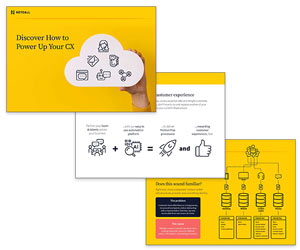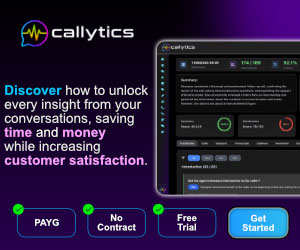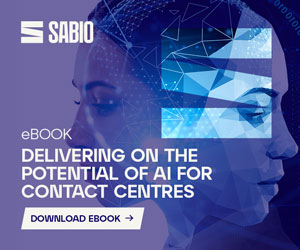Pol Brouckaert at Netcall explores how IDP has matured, highlighting key technological advancements and illustrating why it’s central to successful business transformation.
Enterprises today face unprecedented pressure to digitise processes, reduce costs and improve accuracy. Intelligent document processing (IDP) has emerged as a critical solution, evolving significantly to address complex business demands.
Understanding Intelligent Document Processing (IDP)
Intelligent document processing (IDP) is a technology combining Artificial Intelligence (AI), Machine Learning (ML), Natural Language Processing (NLP) and Optical Character Recognition (OCR) to automate the processing of structured, semi-structured and unstructured files. IDP extracts, classifies and validates data, significantly reducing manual intervention and enhancing accuracy.
Intelligent Document Processing Example
Baloise, a large insurance provider, receives thousands of claim files every day. These include scanned forms, handwritten notes from field agents and supporting photos.
With IDP, the company automatically classifies each item, extracts relevant information like names, policy numbers and claim amounts and checks it against internal systems.
AI models handle poor handwriting, tick boxes and even extract key data from images of accident scenes. This reduces manual work, shortens claim resolution times and improves accuracy.
The benefits:
- Streamlines data extraction and reduces manual labour
- Minimises errors, enhancing compliance and accuracy
- Accelerates processing speed, improving overall efficiency.
Evolution to IDP 2.0: Recent Innovations and the Impact of AI
Intelligent document processing has been useful since its conception, helping organisations automate basic data extraction and categorisation.
However, it’s come a very long way. What once handled simple OCR tasks, has now evolved into a mature, AI-powered capability.
Today, the technology has reached a transformative new phase, driven by foundational models built on transformer architectures with massive layers and attention heads trained on vast datasets.
Innovations like Generative AI (genAI) and Large Language Models (LLMs), Vision Transformers (ViTs) and Natural Language Processing (NLP) have enabled more general-purpose systems, reducing the need for task-specific customisation and making it faster and more cost-effective to address a wide range of use cases.
Here’s what IDP 2.0 brings to the table:
1. Faster and Easier Setup
Modern IDP 2.0 solutions require little to no training data to get started. Thanks to techniques like zero-shot and few-shot learning, AI models can now generalise from just a handful of examples – or even none – making it possible to process unseen documents without lengthy setup.
Pre-trained models, intuitive low-code interfaces and template-driven configuration dramatically reduce implementation time and cost.
This means businesses can start realising value from IDP in days, not months. IDP is no longer limited to massive, high-volume use cases like processing tens of thousands of paper documents a year.
There’s no longer a need for big, up-front investments that must be written off over time. It’s accessible, flexible and scalable for smaller or more agile processes.
2. Stronger Support For Complex and Long Documents
New advances in Large Language Models (LLMs) and contextual AI allow IDP systems to understand meaning, relationships and document structure far more deeply. This enables:
Context-Aware Classification
Documents are categorised based on intent and nuance, not just keywords. Improved NLP models now deeply interpret context, enabling sophisticated decision-making and insights from complex document scenarios. This facilitates better-informed decisions, precise actions and higher operational intelligence.
Cross-Document Data Linking
Information is automatically linked across multiple documents and sources, unlocking better decision-making.
Processing Long Documents (+100 pages)
IDP 2.0 can handle long-form content by logically segmenting documents into structured sections. This ensures accurate extraction without losing contextual relationships across the entire file.
These capabilities are essential for use cases like underwriting, claims and regulatory compliance, where context and completeness are critical.
3. Advanced Multi-Modal Processing
Modern IDP can analyse multiple data types – text, handwriting, tables and images – within a single workflow.
It combines insights from both textual and visual elements for highly accurate extraction, even in complex or low-quality documents. Enhanced capabilities include:
Image and Visual Data Interpretation
AI-driven image recognition technology has greatly improved data extraction from images such as IDs, passports, invoices and signature recognition.
This progress has been enabled by the development of Convolutional Neural Networks (CNNs), Vision Transformers (ViTs) and advanced object detection models like YOLO (You Only Look Once) and Mask R-CNN.
These techniques allow models to accurately detect, segment and interpret visual elements within an image, even under challenging conditions such as low resolution, distortion or occlusion. This enhances security, compliance and speed in processes like customer onboarding and identity verification.
Why IDP Has Become a Strategic Priority For Modern Enterprises
IDP technology delivers critical business advantages, take these examples from Input For You, a service provider in the insurance sector:
Improved Customer Experience
By drastically reducing processing time, IDP ensures faster turnaround and improved service delivery. Input For You reduced claims processing time by 80% – from 20 days to under 4.
Cost Reduction
Automating document handling eliminates the need for manual review and entry, lowering operational costs. Input For You scaled their document operations without hiring additional staff, showcasing how IDP delivers operational efficiency.
Workforce Optimisation
IDP frees employees from repetitive, low-value tasks, allowing them to focus on customer engagement and high-impact work.
At Input For You, automation and 99.5% data capture accuracy meant staff could focus on exceptions and high-priority cases.
Enhanced Accuracy and Compliance
Reducing human error and manual intervention strengthens compliance and audit readiness. Input For You improved GDPR compliance by limiting manual access to sensitive data, ensuring a secure and compliant data processing solution.
These real-world results underscore the transformative potential of AI-powered IDP for any organisation seeking to scale with accuracy, agility and efficiency
This blog post has been re-published by kind permission of Netcall – View the Original Article
For more information about Netcall - visit the Netcall Website
Call Centre Helper is not responsible for the content of these guest blog posts. The opinions expressed in this article are those of the author, and do not necessarily reflect those of Call Centre Helper.
Author: Netcall
Reviewed by: Megan Jones
Published On: 1st Aug 2025
Read more about - Guest Blogs, Netcall






 Netcall is trusted by organisations worldwide, with 9 out of 10 customers ready to recommend us. With Liberty Converse CX, you can streamline operations, enhance customer engagement, and achieve real, measurable results.
Netcall is trusted by organisations worldwide, with 9 out of 10 customers ready to recommend us. With Liberty Converse CX, you can streamline operations, enhance customer engagement, and achieve real, measurable results. 

































